If you were to ask a child to design a place with an empty landscape, big skies, hills and rivers, dotted with picturesque villages and an extinct volcano, they would end up with something that looks a lot like Northumberland National Park.
Of the 13 national parks in England and Wales, Northumberland is the most northerly, most remote and least visited. It is the least populated of the UK’s 15 protected landscapes.
Covering 410 square miles between the Scottish border and the UNESCO World Heritage site of Hadrian’s Wall, this is a land of uninterrupted views. The turbulent Rivers Rede and Coquet flow south from Scotland, carving deserted valleys in their wake; the Tyne, the most northerly of England’s great rivers that bisect the Pennines, gathers its power here.
It is exciting, often elemental, as befits a region that butts up against the Scottish border. The hamlets of Harbottle and Alwinton, gateways to Upper Coquetdale, can feel like border posts against true wilderness.
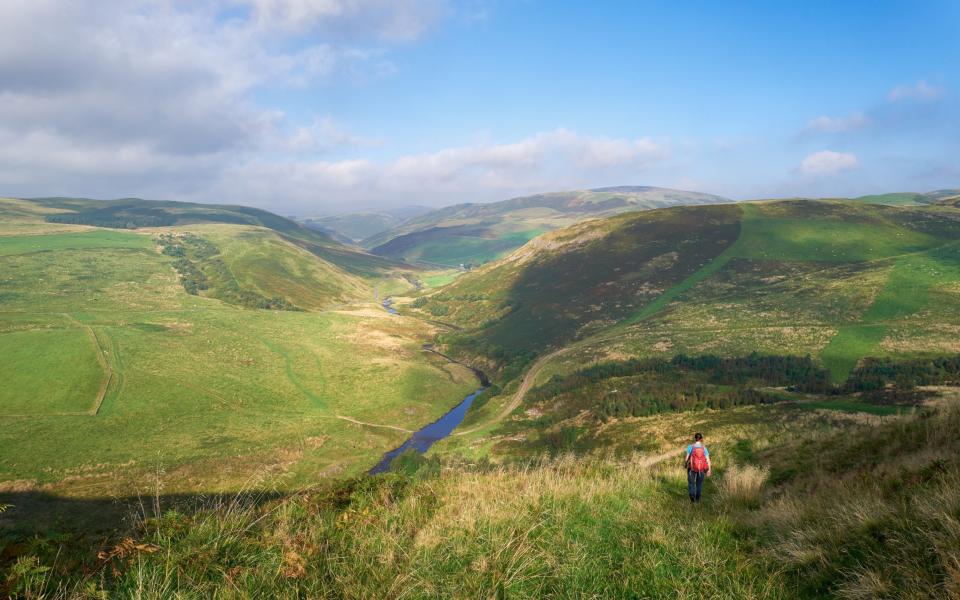
The national park is also England’s Empty Quarter. Designated in 1956, much thought went into the boundaries: the county’s dramatic coastline was excluded, as was most of Kielder Forest and any settlement of any size. As a result, Elsdon, a pretty village with stone frontages, a parish church and just 50 houses, is the largest settlement – larger villages such as Bellingham and the attractive market town of Rothbury lie outside the boundary. Few other places in England have such dark skies.
Nevertheless, the park is popular with holidaymakers (1.27 million visits in 2021) and is often cited as an example of the value of empty spaces: a 2022 report found that Northumberland National Park contributed £81 million to the regional economy. Here’s how to get the most out of your trip.
Where is Northumberland National Park?
The park is shaped like an uneven stack of books and covers an area running southwest to northeast in the west of the county of the same name. It is bounded to the south by the A69, to the east by the A697, while the A68 divides it in two. To the west, much of the park abuts the border between England and Scotland. The town of Hexham lies to the southeast, but Newcastle is the nearest large city. In the middle of the park area, but technically outside the boundary, is Otterburn. The extreme northeast of the park is bounded by the town of Wooler, while Kelso and Coldstream lie to the north.
Although all major settlements are excluded from the park, six million people live within an hour’s drive.
What is Northumberland National Park famous for?
Remote is a word you hear too often in England. But if you look around Upper Coquetdale and Redesdale, you will find winding single-lane roads between high hills. You will have views of meadows and landscapes devoid of human habitation. You will feel like you are far away from it all.
It is above all the atmosphere that can charm you: it is easy to be carried away by the echoing spirits of Picts, Romans, Scots and English soldiers who all passed through here, along with smugglers and other criminals.
The Romans left a significant footprint here, and Hadrian’s Wall, designed to protect the empire from the barbarians further north, runs east-west along the southernmost border. It is here, around Housesteads, that you will find the main remains, in the form of forts, milecastles, ramparts and museums.
The park offers wide, uninterrupted views, perhaps most spectacular from the summit of the Cheviot, the highest point in the Northumberland National Park at 815 metres. 400 million years ago, the Cheviot was a volcano the size of Etna and many of the surrounding hills were formed by ancient lava flows.
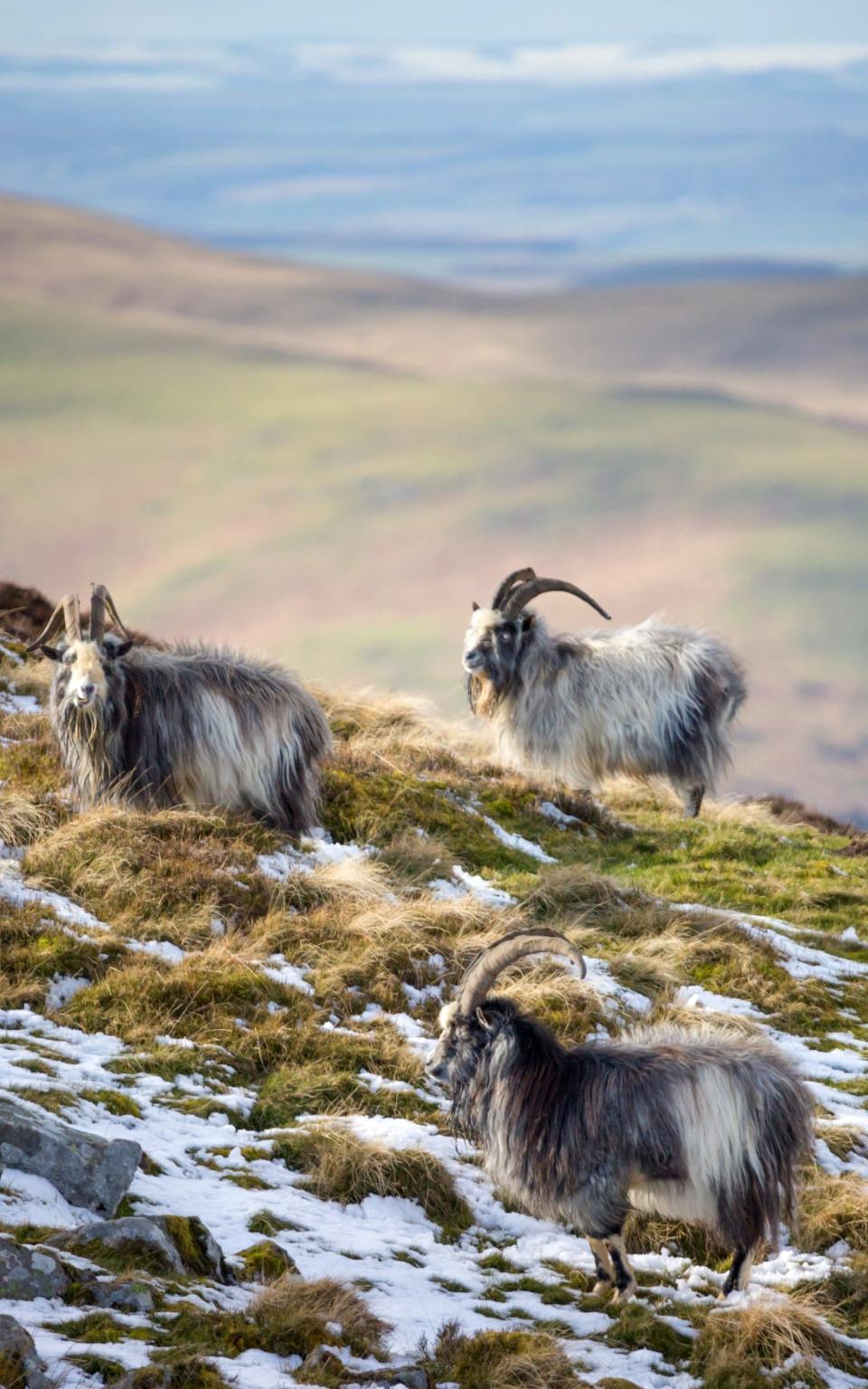

The countryside is special too, with several National Nature Reserves and Sites of Special Scientific Interest to explore. Look out for red squirrels, lapwings, curlews and black and red grouse. Dippers bounce and bob along rivers and streams, while hardy breeds of hill sheep such as Blackface and Swaledale are at home here; the traditional Cheviot breed gravitates towards more sheltered slopes. In the far north, the feral Cheviot goats of College Valley are said to be descended from a herd released by the monks on Lindisfarne in the Middle Ages.
What to do in Northumberland National Park
The best for history buffs
Significant historic sites from the Roman period include Housesteads, the most complete Roman fort in Britain, and Milecastle 42, a fortified outpost at one of the highest points of the surviving wall.
Nearby is Vindolana, an excellent museum on the site of another former important military post. A little further north is the old Roman camp of Chew Green, less substantial but beautifully situated in the wild, empty Upper Coquetdale. You can go further back in time in the Breamish Valley and around the stone hamlet of Ingram, where you can explore an astonishing concentration of prehistoric hillforts, including Brough Law, Middle Dean and Wether Hill, built of earth and stone ramparts, together with the burial ground of Turf Knowe.
The best for families
The Linhope Spout waterfall is an 18m high slide in the Breamish valley and a lovely place for a picnic. Children can search for red squirrels in the surrounding woodland. Despite the vandalism that removed the Sycmore Gap tree, the walk to the rather desolate stump is still beautiful, if perhaps sad now. Make sure you take them to the nearby The Sill: National Landscape Discovery Centre, an excellent historical and geological interpretation centre, and up and around the Simonside crags (the woodland here is also good for red squirrels).
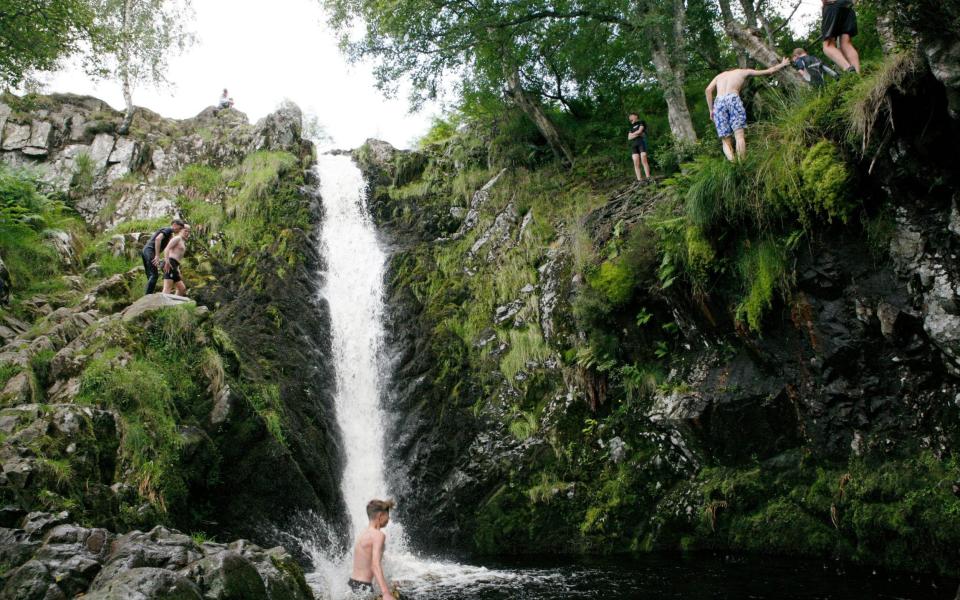

The best for hikers
With over 700 miles of footpaths and 72 percent of the park classified as open access land, you’ll be spoilt for choice. Walk up the Cheviot or trek the steep three miles from Kindale Law to the Border Ridge in Upper Coquetdale. On a clear day you can see as far as the Lake District and, some say, Edinburgh. Explore Whitelee Moor National Nature Reserve, a land of peat bogs and marshes fed by the River Rede and its tributaries. The landscapes here are so remote that the Wildlife Trusts describes walks here as “energetic”.
The best for adventurers
Despite the frequent army pounding, the Otterburn Military Training Area is a land of great beauty, with wildlife and 23 ancient, semi-natural woodlands. Access is restricted at certain times, although these are advertised well in advance. Spend an exhilarating day cycling through the Otterburn Ranges and Coquetdale. Hardier cyclists can tackle the 120-mile Sandstone Way from Berwick to Hexham, which passes through the park regularly. Organised tours can help with this, such as a three-day package with Pedal Power, from £445 including accommodation and luggage transfers.
Best for dark sky lovers
The park is the largest protected area of dark sky in Europe and can be quite magical when night falls and there are regular stargazing events. The park has several designated dark sky discovery sites, such as Ingram, which are open to the public and considered ideal for stargazing. Dark sky events are held at the visitor centre in Walltown Country Park near Greenhead and at Cawfields car park at Milecastle 42 on Hadrian’s Wall.
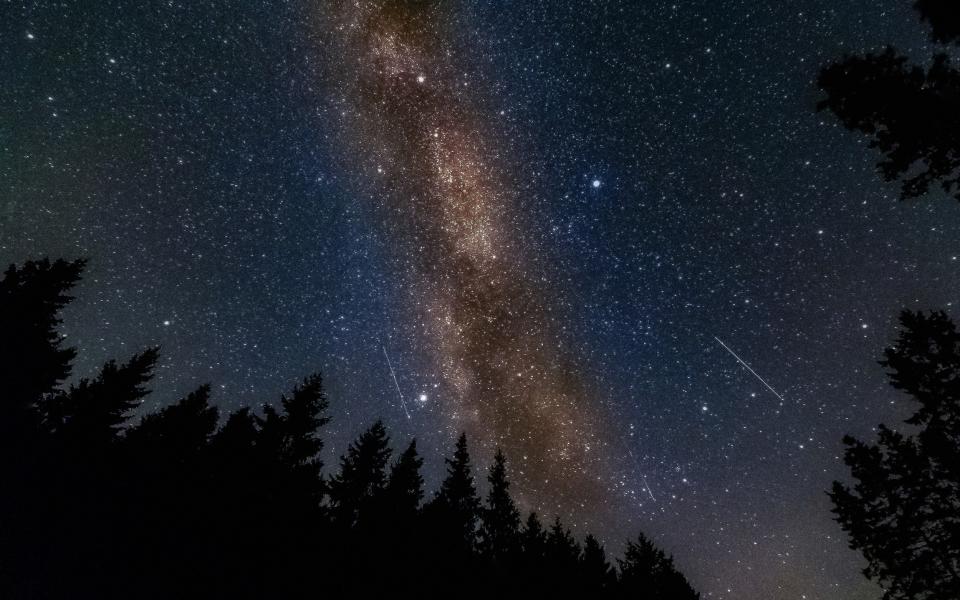

How to get there
The driving
Newcastle is 30 miles to the south-east, Edinburgh is 55 miles to the north, Manchester is 155 miles to the south and London is a six-hour drive. Access from the south is generally via the A69, A98 and A696; from the north via the A68 and A697.
Bus
The Hadrian’s Wall Country bus runs between Carlisle and Newcastle along the southern edge of the park and Go North East operates other services to the park from Newcastle. The 16A runs twice daily, Monday to Friday, from Rothbury to Alwinton in Coquetdale and the 808 runs daily from Newcastle to Otterburn, Monday to Saturday. Traveline is consistently the best way to plan a combined train and bus journey to the park.
Rail
There is no railway line through the national park, but the Carlisle-Newcastle link runs along the southern border, connecting Newcastle with major towns and villages including Hexham, Bardon Mill and Haltwhistle.
Where to stay
Although the raison d’être of the national park was to exclude areas where many people lived, there is plenty of choice within the park’s boundaries and on its fringes.
An elegant baronial 19e Century manor house, Matfen Hall is a luxury option with fine dining, a spa and sensational countryside views from the deluxe balcony rooms. For a memorable dining experience, tuck into local cuisine in the Great Hall’s mezzanine, overlooking stained glass windows. B&B from £239 per room; three courses around £70.
The Pheasant Inn is a former 17th century coaching inn just south of Kielder Water. A low, stable-style building with an interior of oak beams and exposed stonework, this is a delightfully atmospheric pub serving local ales, fine wines and decent food. Rooms are of a similarly high standard, with a minimum stay of three nights in high season. From £510 including breakfast.
Elishaw Farm has two cosy barn conversion cottages near Otterburn, suitable for families. Expect stunning views over Redesdale, a pizza oven, hot tub and garden swing (three nights from £480).
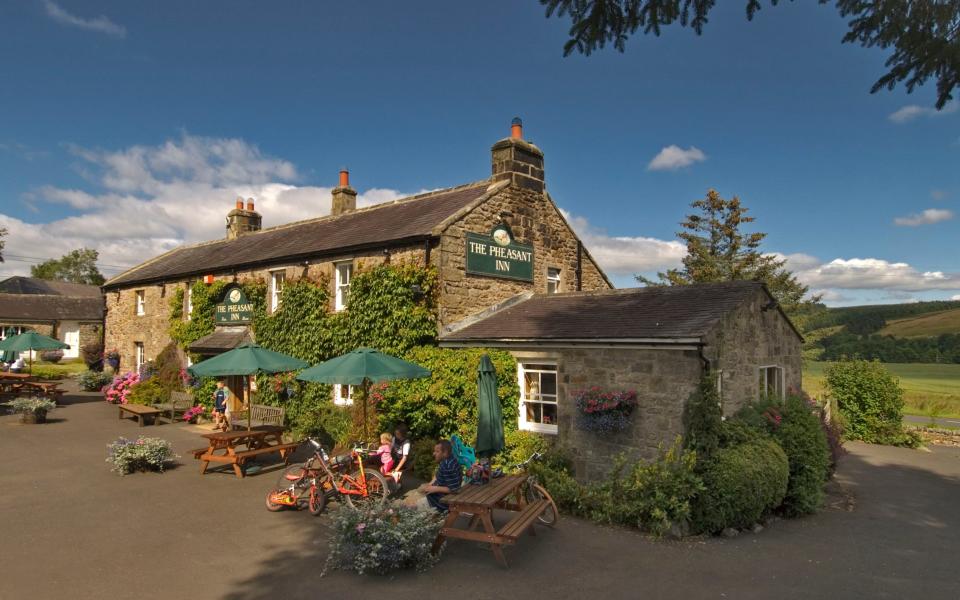

On a budget
YHA The Sill at Hadrian’s Wall is an excellent hostel with a mix of luxury dorms (£30), private rooms (£125) and family rooms (£114).
In the national park just north of Bellingham, Boe Rigg is a campsite with a difference: as well as tent pitches (£35 per night/family of four), there are a couple of family-friendly rooms (£108 per night) and a café that converts into a restaurant.
For glamping, try PoSHHuts, two Shepherd’s huts in Kielder Forest, equipped with soft furnishings, bathroom, kitchen and fire pit (£125 per night). Another good site is Hadrian’s Wall Campsite on the southern border at Melkridge, with options for both campers (£27.50 per night) and glampers (from £68-95 per night).
When to visit
In summer, rare upland hay meadows, such as those around Greenhaugh, are transformed into a blaze of colour, bursting with wildflowers such as yellow rattle, melancholy thistle and wood-cranesbill. Winter is best for the night sky, and although snow often falls, the vast, frost-covered landscapes are unforgettable. Birdwatching tours take place in spring and autumn. The national park runs guided seasonal walks throughout the year.
For even more inspiration, discover the UK’s largest national park, according to science, here.
This story was first published in July 2023 and has been revised and updated.